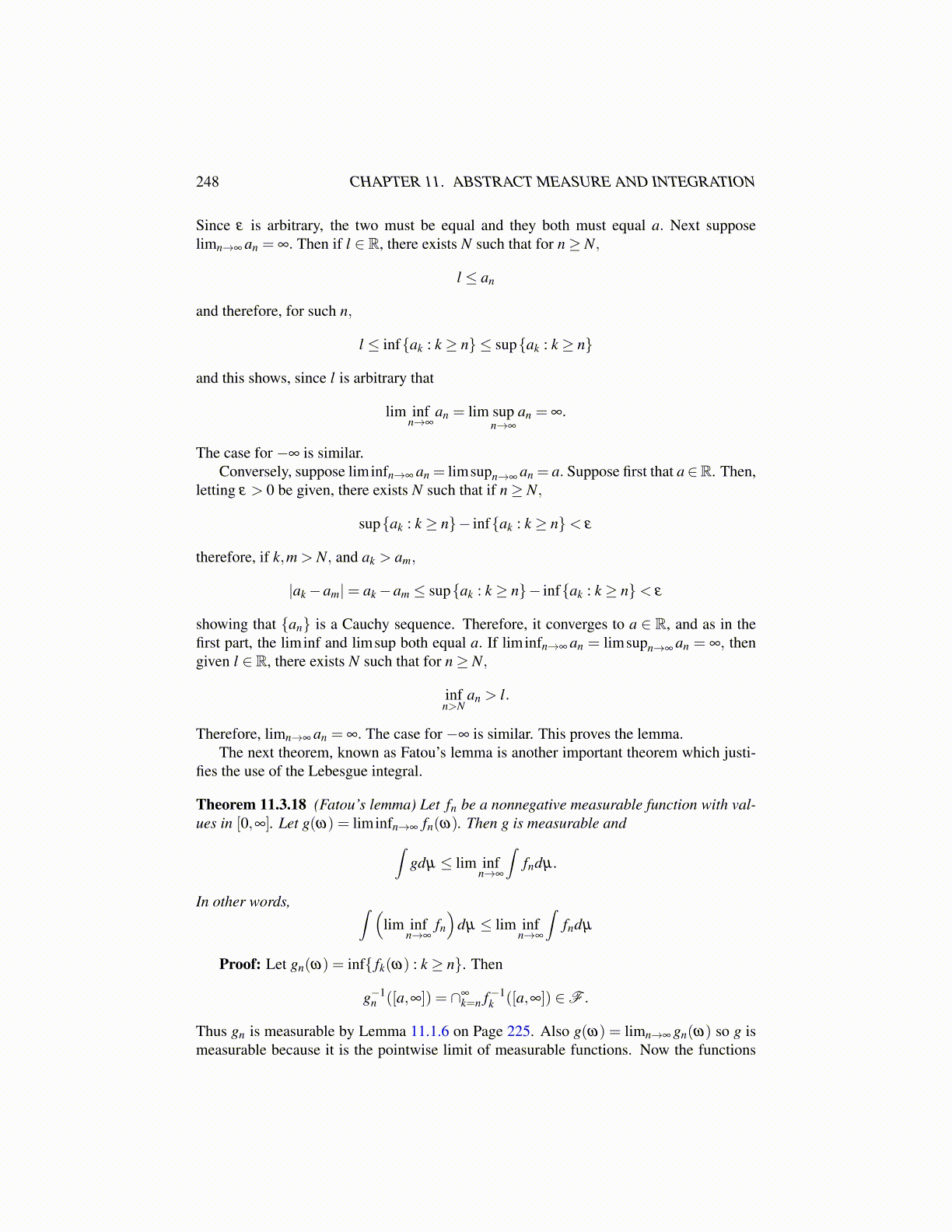
248 CHAPTER 11. ABSTRACT MEASURE AND INTEGRATION
Since ε is arbitrary, the two must be equal and they both must equal a. Next supposelimn→∞ an = ∞. Then if l ∈ R, there exists N such that for n≥ N,
l ≤ an
and therefore, for such n,
l ≤ inf{ak : k ≥ n} ≤ sup{ak : k ≥ n}
and this shows, since l is arbitrary that
lim infn→∞
an = lim supn→∞
an = ∞.
The case for −∞ is similar.Conversely, suppose liminfn→∞ an = limsupn→∞ an = a. Suppose first that a∈R. Then,
letting ε > 0 be given, there exists N such that if n≥ N,
sup{ak : k ≥ n}− inf{ak : k ≥ n}< ε
therefore, if k,m > N, and ak > am,
|ak−am|= ak−am ≤ sup{ak : k ≥ n}− inf{ak : k ≥ n}< ε
showing that {an} is a Cauchy sequence. Therefore, it converges to a ∈ R, and as in thefirst part, the liminf and limsup both equal a. If liminfn→∞ an = limsupn→∞ an = ∞, thengiven l ∈ R, there exists N such that for n≥ N,
infn>N
an > l.
Therefore, limn→∞ an = ∞. The case for −∞ is similar. This proves the lemma.The next theorem, known as Fatou’s lemma is another important theorem which justi-
fies the use of the Lebesgue integral.
Theorem 11.3.18 (Fatou’s lemma) Let fn be a nonnegative measurable function with val-ues in [0,∞]. Let g(ω) = liminfn→∞ fn(ω). Then g is measurable and∫
gdµ ≤ lim infn→∞
∫fndµ .
In other words, ∫ (lim inf
n→∞fn
)dµ ≤ lim inf
n→∞
∫fndµ
Proof: Let gn(ω) = inf{ fk(ω) : k ≥ n}. Then
g−1n ([a,∞]) = ∩∞
k=n f−1k ([a,∞]) ∈F .
Thus gn is measurable by Lemma 11.1.6 on Page 225. Also g(ω) = limn→∞ gn(ω) so g ismeasurable because it is the pointwise limit of measurable functions. Now the functions